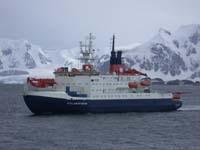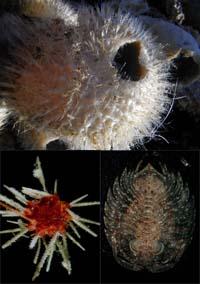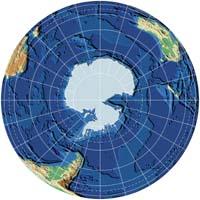Treasure in antarctic waters

A group of international scientists undertook a project called ANDEEP.
(Photo: A. A. Brandt))
The conditions for living in the Antarctic Ocean are very harsh. For example, in deep ocean waters the temperature is less than 0º C. Therefore, the research carried out so far foresaw the shortage of lives in these deep waters. But they never did a serious study to meet the deep living creatures of the Antarctic Ocean.
With the aim of conducting an exhaustive analysis of these waters, a group of international scientists undertook a project called ANDEEP. Three expeditions were carried out between 2002 and 2005. At first they thought they would find little, but found enormous prosperity in the deep waters of the Antarctic Ocean! More than 1,400 species were found, of which about 700 were new species that until then no one had described. It wasn't a silly brand!

More than 1,400 species were found, of which about 700 were new.
(Photo: A. A. Rose and W. Brökeland )
This discovery was, moreover, a way for scientists to discover new things. On the one hand, they observed that the living beings of the skin resemble the deep ones, but those of the skin have many special characteristics: they are bigger, grow more slowly, live longer and acquire later sexual maturity. To develop these characteristics, scientists have come to the conclusion that they have had to evolve isolated for a long time.
And on the other hand, they saw that in deep waters of Antarctica and other oceans of the world, some living beings are genetically similar. For this to be possible, there must be a constant exchange between deep waters all over the world, and that living beings may be diverted from one side to the other.
Where?
Scientists were forced to explain why living beings are isolated from the surface waters of the Antarctic Ocean, and how deep living creatures of the oceans around the world mix.

The main wind of Antarctica, the polar front, is the one that isolates living beings from the surface waters of the ocean. This wind constantly blows south (pole) and prevents ocean surface water from expanding into other oceans, moving continuously in the opposite direction. There are many living beings who depend on the movement of water and, if water does not move, they cannot move either. In Antarctica, the polar front has isolated living beings from surface waters for millennia. It seems that in times of glaciation and thaw that have taken place throughout history, animals have come to their present places when the sea level has increased and decreased. What they do not know is whether the living primitives lived in the background and in the fluctuations of water passed to the surface, or if it happened backwards.
However, they are now isolated from the living beings of deep waters. Some living beings in deep waters, unlike the superficial ones, are dispersed by the oceans of the whole world. This is possible because the polar front does not influence the shallow waters and, therefore, the living beings that inhabit them. Deep waters move according to ocean currents, from one sea to another. And with water they go, of course.
Unexpectedly they encounter a global movement. And, almost unintentionally, they have shown that the Antarctic Ocean is much richer than previously thought. That is, things are not always as they seem.
Published in Deia.
Buletina
Bidali zure helbide elektronikoa eta jaso asteroko buletina zure sarrera-ontzian











